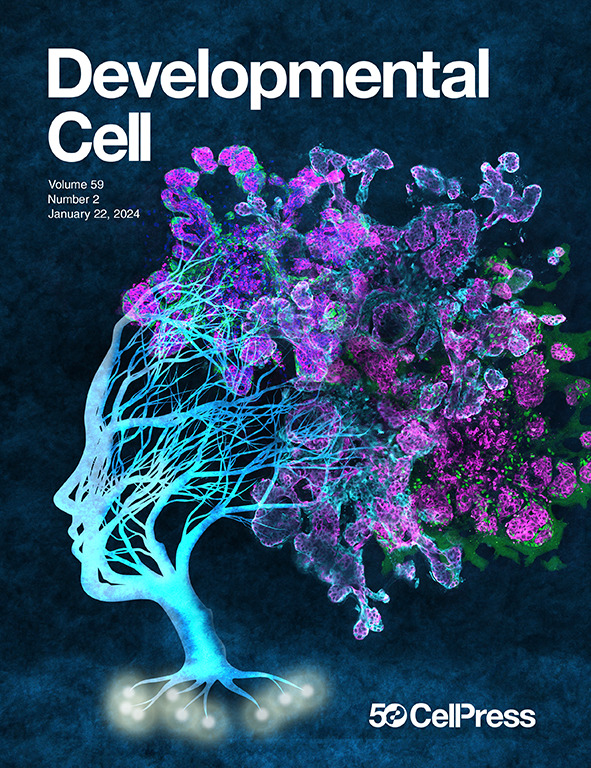Degradation of detrimental microRNAs safeguards the fertilized egg cells to establish an ECS-dependent polytubey block in Arabidopsis
IF 8.7
1区 生物学
Q1 CELL BIOLOGY
引用次数: 0
Abstract
Fertilization of the egg cell by more than one sperm cell results in aneuploidy and genomic dysfunction. To avoid this, flowering plants have intricate polytubey block mechanisms that prevent additional pollen tubes from entering the ovule. In one mechanism for blocking polytubey, the fertilized egg cell secretes the aspartic endopeptidases EGG CELL-SPECIFIC1 (ECS1) and ECS2, which degrade pollen tube attractants. However, the mechanism underlying the egg-cell-specific expression of ECS1 and ECS2 was unknown. Here, we demonstrate that in Arabidopsis thaliana egg cells, SMALL RNA DEGRADING NUCLEASE (SDN) degrades microRNAs (miRNAs) targeting ECS genes, thereby allowing ECS1 and ECS2 to accumulate in egg cells to establish the polytubey block. Like Arabidopsis ecs1 ecs2 mutants, sdn1 sdn2 sdn3 mutants exhibited polytubey, as did plants specifically overexpressing miRNAs targeting ECS genes in egg cells. Therefore, the SDN-miRNA-ECS module allows ECS accumulation in egg cells to block polytubey.

有害microrna的降解保护受精卵细胞在拟南芥中建立ecs依赖性多管阻滞
卵细胞被一个以上的精子受精导致非整倍体和基因组功能障碍。为了避免这种情况,开花植物有复杂的多管阻滞机制,防止额外的花粉管进入胚珠。在一种阻断多管的机制中,受精卵细胞分泌天冬氨酸内多肽酶egg cell - specific1 (ECS1)和ECS2,它们降解花粉管引诱剂。然而,ECS1和ECS2的卵细胞特异性表达机制尚不清楚。在这里,我们证明了在拟南芥卵细胞中,SMALL RNA降解核酸酶(SDN)降解靶向ECS基因的microRNAs (miRNAs),从而使ECS1和ECS2在卵细胞中积累以建立多管阻滞。与拟南芥ecs1 ecs2突变体一样,sdn1 sdn2 sdn3突变体也表现出多管性,植物在卵细胞中特异性地过表达靶向ECS基因的miRNAs。因此,SDN-miRNA-ECS模块允许ECS在卵细胞中积聚以阻断多管管。
本文章由计算机程序翻译,如有差异,请以英文原文为准。
求助全文
约1分钟内获得全文
求助全文
来源期刊

Developmental cell
生物-发育生物学
CiteScore
18.90
自引率
1.70%
发文量
203
审稿时长
3-6 weeks
期刊介绍:
Developmental Cell, established in 2001, is a comprehensive journal that explores a wide range of topics in cell and developmental biology. Our publication encompasses work across various disciplines within biology, with a particular emphasis on investigating the intersections between cell biology, developmental biology, and other related fields. Our primary objective is to present research conducted through a cell biological perspective, addressing the essential mechanisms governing cell function, cellular interactions, and responses to the environment. Moreover, we focus on understanding the collective behavior of cells, culminating in the formation of tissues, organs, and whole organisms, while also investigating the consequences of any malfunctions in these intricate processes.
 求助内容:
求助内容: 应助结果提醒方式:
应助结果提醒方式:


